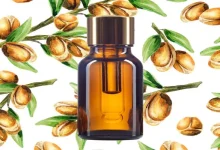The Benefits of Rice Bran Oil for Skin Health
Rice bran oil, derived from the outer layer of rice grains, has garnered significant attention in recent years due to its numerous health benefits, particularly for the skin. Rich in antioxidants, vitamins, and essential fatty acids, this oil is an emerging favorite among beauty enthusiasts and skincare experts alike. This article delves deep into the myriad benefits of rice bran oil for skin health, its composition, applications, and potential side effects.
Composition of Rice Bran Oil
Understanding the unique properties of rice bran oil is crucial to appreciating its benefits for skin health. The oil contains a variety of components that contribute to its efficacy:
-
Fatty Acids: Rice bran oil is composed of approximately 30-40% saturated fat, 40-50% monounsaturated fat, and 20-30% polyunsaturated fat. This balanced fatty acid profile makes it an excellent emollient, aiding in skin hydration and barrier protection.
-
Vitamins: Notably, rice bran oil is rich in Vitamin E (tocopherols and tocotrienols), a powerful antioxidant that helps to combat oxidative stress. Additionally, it contains Vitamin B, which plays a crucial role in skin health.
-
Antioxidants: The oil is abundant in oryzanol, a potent antioxidant that not only protects the skin from damage caused by free radicals but also aids in skin repair and rejuvenation.
-
Squalene: Present in small amounts, squalene mimics the skin’s natural oils, making rice bran oil an effective moisturizer.
Benefits for Skin Health
The multifaceted advantages of rice bran oil make it an attractive option for various skin concerns. Here are some notable benefits:
1. Moisturization
Rice bran oil is an excellent emollient that deeply hydrates the skin. Its fatty acid content helps to strengthen the skin’s barrier, preventing moisture loss and promoting a soft, supple texture. Regular application can lead to a more hydrated complexion, making it suitable for individuals with dry or sensitive skin.
2. Anti-Aging Properties
The antioxidants in rice bran oil, particularly tocopherols, play a pivotal role in fighting signs of aging. They help to neutralize free radicals, thereby reducing the appearance of fine lines and wrinkles. Moreover, oryzanol has been shown to improve skin elasticity, making the skin appear firmer and more youthful.
3. Skin Brightening
Rice bran oil has been traditionally used in various cultures for its skin-brightening properties. It can help to diminish hyperpigmentation and promote a more even skin tone. The presence of vitamins and antioxidants aids in reducing dark spots and improving overall skin clarity.
4. Sun Protection
While not a substitute for sunscreen, rice bran oil offers some natural protection against UV rays due to its antioxidant content. Oryzanol, in particular, has been found to absorb UV light, which can help reduce sun damage and inflammation.
5. Soothing Irritation
The anti-inflammatory properties of rice bran oil make it beneficial for soothing irritated or inflamed skin. It can be especially useful for conditions such as eczema or psoriasis, as it helps to calm redness and itching while promoting healing.
6. Acne Management
While oil is often associated with acne, rice bran oil’s lightweight consistency makes it suitable for acne-prone skin. Its non-comedogenic nature means it won’t clog pores, and its anti-inflammatory properties can help reduce redness and swelling associated with breakouts.
7. Wound Healing
The oil’s nourishing properties extend to wound healing. Its rich nutrient profile can support skin regeneration and repair, making it beneficial for minor cuts, burns, and other skin injuries.
How to Use Rice Bran Oil
Incorporating rice bran oil into a skincare routine is simple and can be done in various ways:
-
As a Moisturizer: Apply rice bran oil directly to the skin after cleansing to lock in moisture. A few drops are usually sufficient for the face, while more can be used for body application.
-
In a DIY Face Mask: Combine rice bran oil with other ingredients such as honey or yogurt to create a hydrating face mask. Leave it on for 15-20 minutes before rinsing for a nourishing treatment.
-
As a Makeup Remover: Use rice bran oil to effectively remove makeup. Its emollient properties allow for gentle cleansing without stripping the skin of its natural oils.
-
In Massage Oils: Mix rice bran oil with essential oils for a soothing massage blend. Its absorption properties make it ideal for this purpose.
Potential Side Effects
While rice bran oil is generally safe for most skin types, a patch test is recommended, especially for those with sensitive skin or allergies. Some individuals may experience mild irritation or allergic reactions. If redness or itching occurs, discontinue use and consult a dermatologist.
Conclusion
Rice bran oil is a versatile and potent addition to any skincare regimen. With its unique composition and a wide array of benefits, it addresses various skin concerns ranging from dryness to aging. As a natural and effective moisturizer, it has the potential to transform the health and appearance of the skin. Whether used alone or in combination with other ingredients, rice bran oil offers a holistic approach to achieving radiant, healthy skin.
Incorporating rice bran oil into daily skincare routines can lead to long-term improvements in skin texture, hydration, and overall appearance, making it a worthy investment for those seeking natural beauty solutions. As interest in natural and holistic skincare continues to rise, rice bran oil stands out as a shining example of nature’s bounty for skin health.

